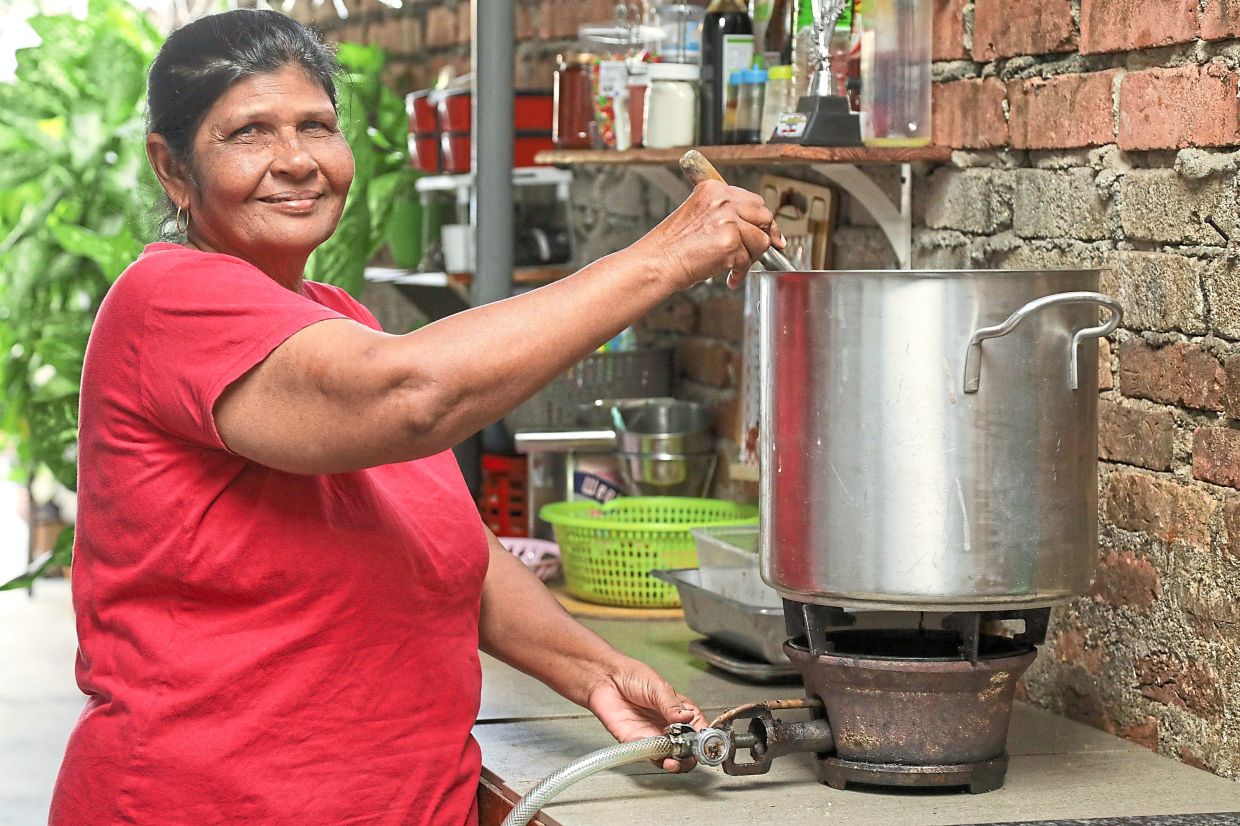Savage cooking glutinous black rice, the first crucial step in crafting her family's treasured homemade wine. Photos: The Star/Yap Chee Hong
In recent days, homemaker Jennifer Savage, 67, has been busy with last-minute preparations for Christmas. While most people are focused on baking cookies and wrapping gifts, the sexagenarian is dedicated to bottling her homemade rice wine, a treasured family tradition passed down through generations.
Using a 90-year-old family recipe, the Eurasian matriarch from the Portuguese Settlement in Ujong Pasir, Melaka has prepared 50 bottles of her sweet wine, which will be given out as gifts to family and loved ones.
Savage learned to make the rice wine from her mother close to 50 years ago, in an effort to preserve part of her culinary tradition.
"Back then, homemade wine was very popular, as most families in our community made it themselves. We usually drink this specialty wine during family gatherings and weddings," says Savage during an interview in Melaka recently.
Savage is one of a handful of Portuguese Eurasian women who is well versed in brewing this simple but nuanced rice wine. It is made using just four ingredients – black glutinous rice (pulut hitam), sugar, ragi (a traditional starter culture that contains bacterial enzymes and yeast that help kickstart fermentation) and water.
She brews her special wine during three key festivals: Christmas, Easter and the San Pedro Festival – an annual June celebration honouring Saint Peter, the patron saint of fishermen.
While rice wines like lihing from Sabah and tuak from Sarawak are better known, Savage notes that her wine remains a quieter tradition. "Our homemade wine is mainly known within our community, especially among the older generation. It is not as popular among the younger crowd, who may prefer imported wines, whisky or beer. I also make it exclusively for family consumption," she explains.
Savage explains that the process of making her homemade wine is similar to that of tuak and lihing. Cooked glutinous rice is fermented with yeast, sugar and water to produce the alcoholic beverage. She lets it ferment in a large clay jar for three weeks, covering it with cloth to allow gases to escape during fermentation.
She keeps the recipe closely guarded, reluctant to share more details of the brewing process.
"Clay jars are preferred as they are porous and allow air circulation. This helps keep the contents cooler. I don't use glass jars because they are airtight and can't promote the cooling effect. Aluminium containers may react with the acids in the wine, which can affect the taste and quality."
She follows several dos and don'ts when making the wine: "There are lots of 'pantang larang' – you must have happy thoughts. Always stir in one direction. If you have bad thoughts, it will turn sour."
After brewing it for three weeks, she strains it using muslin cloth to remove any impurities and stores them in glass bottles which have been washed and sundried.
She says sanitation, fermentation and the right temperature play an important role in making a good batch of wine.
"If the jars aren't cleaned properly, mould can form, and the wine will taste sour or vinegary. Always smell the wine before consuming it – if it doesn't smell right, pour it down the drain."
Regarding the taste of a good homemade wine, Savage says, "The liquid should be clear with a sweet taste. Despite being made from black glutinous rice, it tastes like grapes. If too much water is added during fermentation, the wine loses its taste and body."
Home-brewed tradition
Savage cooking glutinous black rice, the first crucial step in crafting her family's treasured homemade wine. Photos: The Star/Yap Chee Hong
Savage's homemade wine is made using a 90-year-old recipe.
— YAP CHEE HONG/The Star
Savage (left) is pleased that her son Hendricks is gradually learning the art of crafting their traditional homemade wine.
— YAP CHEE HONG/The Star








